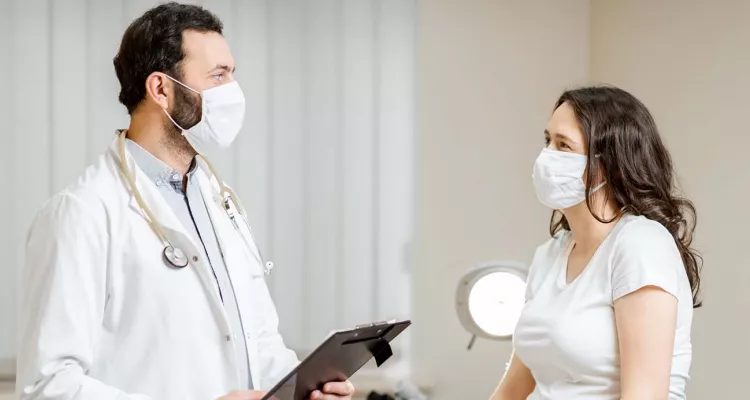
It’s never too late to start adopting healthy habits. But it’s also never too early. This is particularly true when it comes to diabetes, which affects more than 600,000 people in South Carolina. And that number is expected to continue to grow without drastic action. That’s where upstream intervention comes in.
What is “upstream intervention”?
Prevention exists on a spectrum, says Diabetes Free SC (DFSC) Coordinator Zack King. Third-level prevention includes measures like disease self-management. This tier of prevention focuses on preventing complications and worsening health outcomes among people who already face a disease diagnosis.
Secondary prevention pertains to identifying disease risk factors and addressing them proactively. For diabetes, this includes blood glucose and A1C screenings.
And then there’s primary intervention.
“Primary prevention is where I lean when discussing ‘upstream.’ These efforts seek to prevent disease and poor health outcomes by reducing risk and creating opportunities for good health,” King said. “This includes addressing social determinants of health and working to create opportunities for people to have access to healthy options like healthy foods and safe spaces for physical activity.”
Lori Phillips, director of the Division of Nutrition, Physical Activity and Obesity Prevention at the South Carolina Department of Health and Environmental Control (DHEC) explains the health care buzz phrase with an interesting anecdote.
“There is a story told in most public health circles of a man walking along the bank of a river and he notices someone in the water drowning. He rushes in to save the person and as he does, he notices another person in the river needing help. Before long, the river is filled with drowning people and more rescuers show up to help. However, some people are not saved and some fall back into the river after they have been saved. One of the rescuers starts walking upstream. When asked where she is going, she says, ‘I’m going upstream to see why so many people are falling into the river.’ What she finds is that the bridge has a hole and people keep falling through the hole in the bridge into the river. If the hole in the bridge was fixed, it could prevent many people from falling into the river in the first place,” Phillips said.

Getting a head start
When it comes to a disease like diabetes, the “hole in the bridge” often occurs before a person is born.
“Obesity and diabetes prevention start with mothers before they even become pregnant, while they are pregnant and post-partum,” Phillips said. “Maternal behaviors impact the new life being born. That’s why upstream approaches, such as the quality of living conditions, fair wages, and access to healthy foods and health care, are so important.”
DFSC launched in 2020 with a mission to engage South Carolinians to live healthier lives. Dr. Tim Lyons, executive medical director with DFSC, explains the initiative’s multipronged approach that focuses on pregnant women and children in addition to supporting efforts to help adults develop healthier habits.
“A key concept in mitigating the effects of diabetes across the human lifespan is the need to establish ‘metabolic health’ early in life. Good health in utero, throughout childhood and into adulthood sets the scene for good health in later life. Similar efforts later in life are much less effective,” Lyons said.
The pregnancy initiative launched through DFSC aims to improve the outcomes of pregnancy complicated by diabetes, either pre-gestational Type 1 or Type 2 diabetes or gestational diabetes.
“There is abundant evidence of the fetal origins of chronic disease. This means an unhealthy intra-uterine environment — poorly controlled maternal diabetes is a common example — creates health risks for the baby. This is not only true during the pregnancy and at the time of birth but also decades later. These risks can manifest as a propensity to develop cardiovascular disease, high blood pressure, obesity and Type 2 diabetes,” Lyons said.
The pregnancy initiative also aims to improve the mother’s health.
“Good management of diabetes is crucial for the mother’s own health, during her pregnancy and for years afterward. Pregnancy provides a critically important opportunity to improve community health through care and education of young women and by ensuring a healthy start for their children,” Lyons said.
Keeping the momentum going
The efforts do not stop after birth. Babies grow into children and spend most of their time in school. This is an ideal time to reinforce the importance of developing healthy habits.
“In South Carolina, about half of our public-school students do not meet health-related fitness standards for cardiorespiratory fitness. Schools are not solely responsible for this, but they can provide more opportunities for physical activity before, during and after school,” Phillips said. “By integrating physical activity into the school day and through quality physical education, students would not only receive physical benefits but also mental, emotional, and social benefits as well.”
DFSC began working works schools to help school district leaders improve the health of their students. “Our partners with the Alliance for a Healthier Generation and Boeing Center for Children’s Wellness work to create healthier environments in schools for children to be more active and have access to healthy foods,” King said. “Generally, working with children is considered more upstream because it works to improve their health at a younger age and has the potential to decrease their long-term risk for diabetes and other conditions as they get older.”
The school-based wellness programs benefit more than just the students who participate in them. They have the potential to affect wide-ranging change in the school community.
“These initiatives also work at the policy, systems and environmental change level. They seek to create healthier opportunities for all kids that are woven into the culture of the whole school community instead of just focusing on a smaller intervention to address a certain group of kids,” King said.
Combining upstream intervention with disease management
Upstream prevention is just one piece of the complex puzzle to eliminating diabetes in South Carolina. These efforts must be combined with secondary and tertiary prevention methods to care for all South Carolinians affected by diabetes.
“It would be easy to put the responsibility on the people with obesity or diabetes to change their behaviors (or to stop falling into the river) but that would not be fair or helpful. What are we doing collectively to plug the hole in the bridge? No one person or entity can do this alone,” Phillips said. “To truly prevent these diseases means to keep people from developing them in the first place. This means that to prevent these diseases, we must start early and focus on our children. We must fill the hole in the bridge.”


